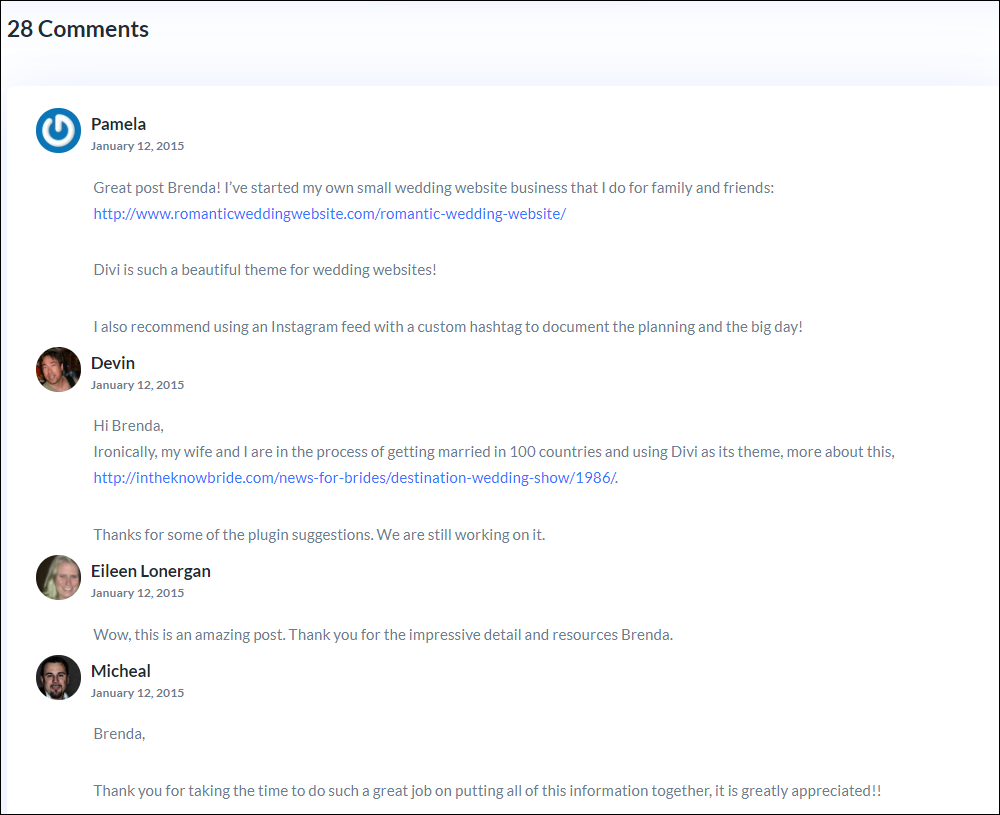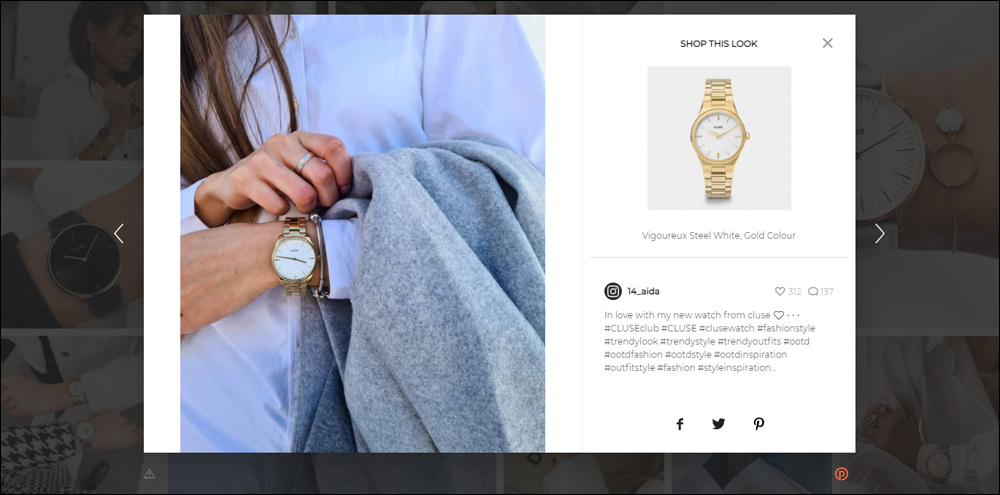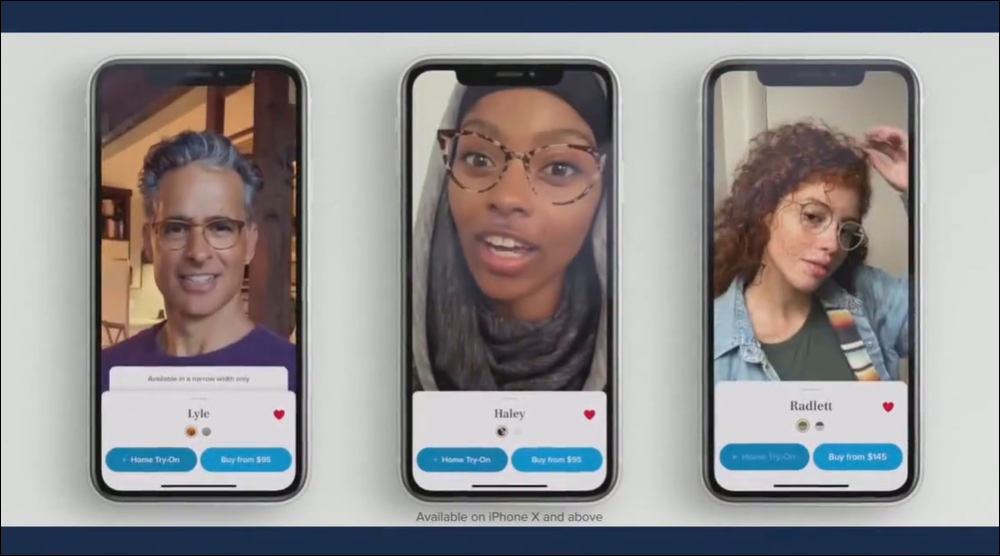Content Marketing With WordPress – User-Generated Content

This tutorial is part of our series on using content marketing to create more exposure online for your business and drive more traffic to your site.
Subscribe to our web content creation course and learn how to never run out of great content for your website, blog, or newsletter.
***
In this tutorial, we look at adding user-generated content to your content marketing mix and explore the features of WordPress that allow you to publish user-generated content on your site.
What Is User-Generated Content (UGC)?
According to Wikipedia…
User-generated content (UGC) is defined as “any form of content such as blogs, wikis, discussion forums, posts, chats, tweets, podcasting, pins, digital images, video, audio files, and other forms of media that was created by users of an online system or service, often made available via social media websites”.
(Source: Wikipedia)
In theory, with user-generated content, you don’t need to generate content, as users generate user-generated content (huh??)
But you do need to provide a platform to facilitate the UGC process and help get the ball rolling.
User-Generated Content Platforms
Social media is the obvious platform that comes to mind when thinking about user-generated content. Online communities like Facebook and Twitter, for example, provide tools that allow users to continually interact with one another, generating more and more content.
Discussion groups (e.g. LinkedIn Groups) and online forums are also examples of platforms built to support user-generated content. As are video-sharing sites like YouTube and photo-sharing sites like Instagram and Flickr, which are populated entirely by content generated by users and members.
Facebook, Twitter, LinkedIn, YouTube, Instagram, and many others rely on user-generated content to build their business and grow their asset.
With WordPress, you too can add user-generated content to your site and build a digital asset on your own domain.

WordPress provides many features that allow users to interact and engage with your site, and generate user content in the process.
You can also have this content be automatically syndicated across to your social media sites, which will help drive new users back to your site.
User-Generated Content Methods
Let’s go through some of the methods you can use to create user-generated content on your site:
WordPress Commenting
The built-in WordPress Commenting system allows visitors, users, and blog readers to interact with your site, post new comments, reply to existing comments and engage with your content as part of an active social community.

You can also enhance the WordPress native commenting feature using third-party plugins and integrate comments with social media, helping to share and spread UGC around.
For example, using a plugin like Disqus can drive more comments and user engagement on your site.

The Disqus plugin replaces the default WordPress comment system and automatically imports your existing comments.
Disqus integrates seamlessly with WordPress. It provides a commenting experience that helps keep users engaged on your site longer and brings them back to your site with web and email notifications and personalized digests.
Some of the engagement features this plugin offers to add user-generated content to our site include a real-time comments system with fun discussion interactions: voting, photo, and video upload, rich media embed (Youtube, Twitter, Vimeo, and more), spoiler tags, mentions, and threaded comment display nested to 3 levels.
Users can log in with their social accounts or add guest comments and receive instant activity notifications, email notifications, and digests. User profiles show recent comment history and frequented communities, and the plugin also offers a recommendations widget that shows other users where active discussions are taking place on your site.

To learn more about this plugin, go here: Disqus
Guest Blogging
WordPress gives you the ability to assign and manage different types of users on your site, such as contributors, authors, and editors. This lets you invite guest authors to contribute new content on your site, often for a return link to their site or a line or two of self-promotion.
Guest Blogging is a two-way street where the benefits flow for both the guest blogger and the blog owner. As a guest blogger, you provide UGC for someone else’s site and get increased exposure for your business, and as a blog owner, you can accept guest blog posts and get user-generated content that you didn’t have to write.

As the blog owner, you can ask for specific topics and subjects to be written for areas where you may lack expertise or authority or to fill voids on subjects that pertain to your niche and your readers, but don’t motivate or inspire you to write. For example, you may have a site on financial topics, but dislike writing about tax legislation. Why not let someone else with more expertise, interest, or passion for that subject fill that void instead?
Guest blogging is also an ideal way to fill gaps in your schedule. For example, let’s say you want to take a vacation. Using a combination of guest blogging and WordPress’s post scheduling feature allows you to continue posting UGC on your site while you are away.
If you are interested in accepting guest bloggers on your site, be prepared to receive many article proposals, especially if your site attracts a lot of visitors.
To help you save time and filter out unsuitable submissions, we recommend setting up submission guidelines on your site. When preparing guidelines for your site, visit sites that accept guest blogging and study their guidelines.
Some of the guidelines you will want to add to your site should include things like minimum and maximum article length, formatting specifications (e.g. maximum number of hyperlinks allowed), republishing terms and conditions, originality, how articles should be delivered, what content you will or will not publish, if the content allows images or graphics, and so on.
If working with an editorial calendar, consider publishing a list of the specific topics you are looking for and when you would need these.
Create a page on your site with your guest blogging guidelines and promote this page on social media, forums, newsletters, etc. Hopefully, this will help you find suitable candidates and regular contributors to your blog and ensure that you receive articles tailored to your guidelines and specifications.
To learn more about guest blogging, sign up for our free email course on how to generate endless content ideas for your website, blog, or newsletter.
Forums
The creators of WordPress have developed a powerful, free, simple-to-install, and easy-to-use forum plugin called bbPress which has become the “de facto” forum software for WordPress users …
bbPress

bbPress gives you one central account with a unified admin area, and the ability to divide your site into multiple sections, making running a WordPress-based forum not only easy to manage but also an ideal platform for user-generated content.
To learn more about this plugin, go here: bbPress
Additional UGC Types
We cover many types of content that can help add user-generated content to your site in the tutorials below:
Summary
User-Generated Content (UGC) allows you to leverage other people’s content creation efforts to boost your own content marketing strategy. WordPress is an ideal platform for facilitating the creation, publishing, and promotion of user-generated content.
Action Step
Can you think of ways to entice your site visitors and blog readers to contribute content to your site?
User-Generated Content Campaigns
We’ve just looked at a number of ways of adding user-generated content to your content marketing mix.
Now, let’s explore some possible ways to add UGC to your site by looking at examples of companies that were able to come up with clever ways of getting users to add content to their online properties and, in many cases, send their UGC campaigns viral.
Repurposing UGC
Known brands often repurpose user-generated content to help further promote their brand.
For example, Domino’s took a positive endorsement posted by one of its followers on its Twitter account (“Soooo Beautiful Up Close!!!!), added a close-up image of one of its pizzas as a background image to create a meme, and then shared this visual UGC on its Facebook page and other networks.
GoPro encourages users to make mini-films, movies, and documentaries with their GoPro cameras and submit these to the company for review. Selected videos then get uploaded to GoPro’s YouTube channel, bringing the film-maker 5 minutes of internet “notoriety” and giving GoPro endless UGC material while also encouraging more people to go out, buy GoPros, and make more videos.
T-Mobile, the mobile communications company, ran a notorious (if not slightly underhanded) ‘Un-Valentine’s Day” campaign to try and steal customers from its competition by offering to pay the contract cancellation fees of anyone who “broke up” with their existing cell phone service and switched over to T-Mobile. To do this, they set up a Facebook app that let people create a custom “break up” letter to their existing carrier. The campaign was so successful, that T-Mobile began using a “Ditch and Switch” Facebook app visitors can use to create and send contract cancellation notices to other mobile providers.
Fan Art
Many companies tap into the collective creative and viral power of their loyal customer base through “fan art.” This generally involves setting up a fun and creative campaign or contest online and inviting their customers to submit fan art using their product, brand, or logo, which they then repost on their social accounts.
Depending on how fun, novel or creative the submissions are, this can generate from hundreds of thousands to millions of views and new visitors by combining UGC with social features like sharing, liking, retweeting, repinning, etc.
Some companies even team up with others to run “fan art” campaigns online that end up benefiting everyone involved.
One of the most creative examples of a joint campaign powered by UGC, was when Belkin, the manufacturer of consumer electronics and connectivity devices teamed up with Lego and developed a customizable phone case with Lego studs that allowed Lego pieces to be added to the back of the phone case. Users were then invited to show off their creations using Instagram with a unique hashtag, creating a viral effect online that helped both companies sell more of their products.

There are many ways to express Fan art. For example, Pillsbury, a producer of baking goods, ran an online campaign where they asked users to submit photos of their “boldest” baked creations, and thousands of users were happy to oblige.
Turn Your Customers Into Models
If your business sells a product that customers can wear, like clothing, fashion accessories, glasses, earrings, hats, shoes, sports or fitness wear, baby clothing … even tattoos or cute onesies, why not combine selfies with a user-generated content campaign to turn your customers into “models” of your products?
For example, UK and Ireland fashion retailer Wallis decided that its ideal customer base would get more value when visiting their website by seeing real photos of real people wearing their brand’s clothing in real-world situations, instead of posed images of glamorous fashion catalog models, thus making their brand very relatable to their audience.

Cluse Watches populates their “Lookbook” section with a UGC gallery. Shoppers scroll through an image gallery that shows how Cluse’s customers have paired their watches with their outfits, and if they click on a picture, they can click on a link to visit the store and buy the featured watch.

SoccerPro.com, an online retailer of soccer shirts invited their customers to send pictures of themselves wearing the shorts of the team the support. These pictures were then added to the product listing, so site visitors could see pictures of real customers and fellow sports fans wearing the apparel.

WarbyParker, a retailer of sunglasses, started a “home try-on” program that lets users upload pictures of themselves wearing different pairs of sunglasses, and online users can then help the user decide which pair of glasses suits them best.

Study the above campaigns and research other posts and articles online on user-generated campaigns for inspiration.
What kind of user-generated campaign could you start to gain more content on your site?
For example, let’s say that your business sells organic cleaning products. You can try to get users involved in a UGC campaign by:
- Asking them to tweet eco-friendly cleaning tips to your Twitter account using a hashtag,
- Starting a video contest or challenge on YouTube and other video-sharing sites to find new ways of using your products,
- Starting a LinkedIn Group discussion on the challenges of switching from non-environmentally-friendly cleaning products to greener alternatives, etc.
Use Someone Else’s UGC
What if your business doesn’t readily lend itself to repurposing customer tweets as UGC or starting “fan art” contests?
You can still add UGC to your website…just use someone else’s content!
There’s plenty of shareable user-generated content online.
You could do the following to add UGC to your site.
- Quote, curate, condense, or paraphrase content from topic-related LinkedIn Group discussions, blog comments, forum posts, Amazon reviews, surveys, polls, etc.
- Repost articles or snippets of articles from topic-related sites using content syndication or RSS feeds (e.g. use WordPress RSS feeds for comments),
- Embed shareable content from YouTube videos,
- Add screenshots of insightful comments and quotes posted on Facebook walls, tweets, etc.
- Use free UGC images from Creative Commons sites, or repinned from Pinterest boards
- And so much more!
Include links, references, credit, and attribution to content sources when using the above methods, and ask for written permission to use the content if in doubt.
User Generated Content – FAQs
Here are frequently asked questions about user generated content:
What is user-generated content (UGC)?
User-generated content refers to any form of content created by users rather than brands, including reviews, comments, testimonials, and social media posts. It can enhance credibility and provide authentic community engagement.
Why is UGC important for content marketing on WordPress?
UGC boosts engagement, increases trust, and enhances SEO as fresh, relevant content can drive more traffic. It also provides valuable insights into customer experiences and preferences.
How can I encourage UGC on my WordPress site?
Implement features that make it easy for users to contribute content. Enable comments, incorporate forums, and use plugins that allow for reviews and ratings. Social media integration can also encourage sharing and interaction.
What types of UGC can I integrate into my WordPress site?
You can integrate various types of UGC such as blog comments, forum posts, customer testimonials, social media feeds, and user-submitted photos or videos.
How do I manage UGC to ensure quality and relevancy?
Set clear guidelines for user contributions and employ moderation tools to review and approve content before it goes live. Plugins and WordPress settings can help filter inappropriate content and spam.
Can UGC improve my site’s SEO?
Yes, UGC can significantly improve SEO by generating fresh content and increasing user interaction, both of which are favorable to search engines. Ensure that UGC is relevant and keyword-optimized to maximize SEO benefits.
Are there any legal concerns with using UGC?
Yes, it’s essential to obtain proper permissions and provide credit for user-contributed content to avoid copyright issues. Clear policies and terms of use should be established on your WordPress site to address copyright and usage rights.
User-Generated Content – Additional Information
See the articles and references below for more information and great examples of user-generated content campaigns:
- http://en.wikipedia.org/wiki/User-generated_content
- https://thethemefoundry.com/blog/wordpress-commenting-system
- http://www.wordstream.com/blog/ws/2014/04/28/user-generated-content
- http://www.jeffbullas.com/2014/06/16/5-steps-to-boosting-website-traffic-with-user-generated-content
- http://www.postano.com/blog/10-great-examples-of-user-generated-content-campaigns
- https://hi.photoslurp.com/blog/what-is-ugc
- https://hi.photoslurp.com/blog/user-generated-content-galleries
Summary
There are many exciting possibilities and ways to generate content and get your users and customers involved. User-generated content can be an excellent form of content to add to your site, as it reflects your audience’s true sentiments, values, and beliefs.
Action Step
Create a list of promotional user-generated content ideas that would get your customers and members of your ideal target audience involved. Find an idea that is reasonably simple and inexpensive to get started with and make it happen.

For additional tutorials on ways to create content for your website, go here: Content Marketing With WordPress
***
Updated: July 5th, 2024

